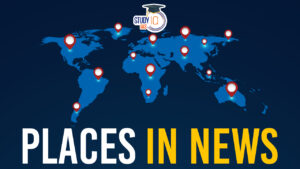Context: On July 9, Earth was spinning 1.34 milliseconds faster than usual according to the U.S. Naval Observatory and the International Earth Rotation and Reference Systems Service.
More in News
- July 22 and August 5 are expected to be between 1.2 and 1.5 milliseconds shorter than the standard 24-hour day.
| Giant-impact Hypothesis |
|
Why Is Earth Spinning Faster Recently?
- Movements in Earth’s Core: Changes in the liquid outer core relative to the mantle can alter the planet’s angular momentum.
- This internal mass redistribution speeds up or slows down Earth’s spin.
- Atmospheric and Oceanic Changes: Shifts in air pressure, jet streams, and ocean currents redistribute mass across the globe, affecting rotation.
- These changes often align with seasonal cycles and short-term climate patterns.
- Moon’s Changing Position: When the Moon is farther from Earth’s equator, it exerts less tidal friction, allowing Earth to spin faster.
- However, over the long term, the Moon slows Earth down by gradually moving away (~4 cm/year).
- Glacial Melting and Mass Redistribution: Melting polar ice due to climate change redistributes mass toward the equator.
- This increases Earth’s oblateness (bulging at the equator), which can slow down rotation, but certain redistributions may also temporarily speed it up.
- Short-Term Variability: Earth’s rotation has never been perfectly steady.
- Just like now (fast spin), there have been slow periods in the past (e.g., 1970s, 1990s) when days regularly exceeded 24 hours.


 Places in News for UPSC 2026 for Prelims...
Places in News for UPSC 2026 for Prelims...
 Lake Natron: Location, Features, Wildlif...
Lake Natron: Location, Features, Wildlif...
 Erra Matti Dibbalu Added to UNESCO Tenta...
Erra Matti Dibbalu Added to UNESCO Tenta...

























